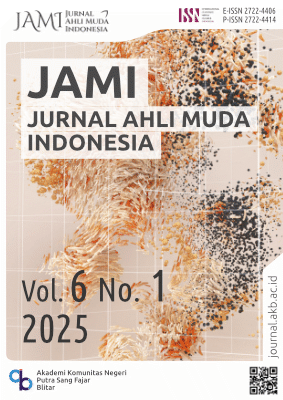Evaluating Genre-Based Instruction through Error Analysis: Insights from Vocational Students’ Procedure Texts
 Abstract views: 148
,
Abstract views: 148
,
 PDF downloads: 128
PDF downloads: 128
Abstract
Writing procedure texts in English is an important skill for vocational students, especially those in practice-based programs. These texts are used in workplaces to give instructions or explain steps clearly and accurately. The Genre-Based Approach (GBA) is often used to help students write better by teaching them the structure and purpose of different types of texts. While many studies have shown that GBA helps students organize their writing, few have looked closely at the language mistakes students still make after learning with this method.
Methods. This study used a qualitative descriptive design to analyze the errors in 30 procedure texts written by students in the Audio-Visual Editing program at AKN Putra Sang Fajar Blitar. These texts were collected after students completed two cycles of learning with the GBA. The errors were analyzed using the Surface Strategy Taxonomy, focusing on four categories: omission, addition, misformation, and misordering. Two raters checked and coded the data, and additional data from teacher notes and student feedback were used to support the findings.
Results. The results showed that most students could follow the correct structure of a procedure text. However, many still made language mistakes. Misformation (wrong word forms) and omission (missing words) were the most common errors. These errors often affected the clarity and meaning of the instructions. This shows that while GBA helps students with text organization, it does not always help improve grammar or sentence accuracy.
Conclusions. Genre-based instruction helps students understand how to organize their writing, but it should be combined with a greater focus on grammar and language use. Teachers should include grammar practice and give detailed feedback on errors. This combination can help vocational students write more precise and more correct texts for real-world communication.
Downloads
References
Darus, S., & Subramaniam, K. (2009). Error analysis of the written English essays of secondary school students in Malaysia: A case study. European Journal of Social Sciences, 8(3), 483–495.
Dulay, H., Burt, M., & Krashen, S. (1982). Language Two. New York: Oxford University Press.
Ellis, R. (1997). Second Language Acquisition. Oxford: Oxford University Press.
Emilia, E. (2011). Pendekatan Genre dalam Pembelajaran Bahasa Inggris: Petunjuk untuk Guru. Bandung: Rizqi Press.
Hyland, K. (2007). Genre pedagogy: Language, literacy and L2 writing instruction. Journal of Second Language Writing, 16(3), 148–164. https://doi.org/10.1016/j.jslw.2007.07.005
Martin, J. R., & Rose, D. (2008). Genre Relations: Mapping Culture. London: Equinox Publishing.
Putra, A. D., & Zainil, Y. (2021). Error analysis on students’ procedure text writing based on surface strategy taxonomy. Journal of English Language Teaching, 10(3), 415–425. https://doi.org/10.24036/jelt.v10i3.112345
Riswanto, R., Haryanto, E., & Waluyo, F. (2014). The use of genre-based approach to improve students’ writing ability. International Journal of English and Education, 3(3), 392–401.
Sugiyono. (2019). Metode Penelitian Pendidikan: Pendekatan Kuantitatif, Kualitatif, dan R&D (25th ed.). Bandung: Alfabeta.
Widodo, H. P. (2006). Designing a genre-based lesson plan for an academic writing course. English Teaching: Practice and Critique, 5(3), 226–250.
Copyright (c) 2025 Anni Alvionita Simanjuntak, Rika Wahyuni Tambunan

This work is licensed under a Creative Commons Attribution-ShareAlike 4.0 International License.
Authors who publish with this journal agree to the following terms:
1. Copyright on any article is retained by the author(s).
2. The author grants the journal, right of first publication with the work simultaneously licensed under a Creative Commons Attribution License that allows others to share the work with an acknowledgment of the work’s authorship and initial publication in this journal.
3. Authors are able to enter into separate, additional contractual arrangements for the non-exclusive distribution of the journal’s published version of the work (e.g., post it to an institutional repository or publish it in a book), with an acknowledgment of its initial publication in this journal.
4. Authors are permitted and encouraged to post their work online (e.g., in institutional repositories or on their website) prior to and during the submission process, as it can lead to productive exchanges, as well as earlier and greater citation of published work.
5. The article and any associated published material is distributed under the Creative Commons Attribution-ShareAlike 4.0 International License




